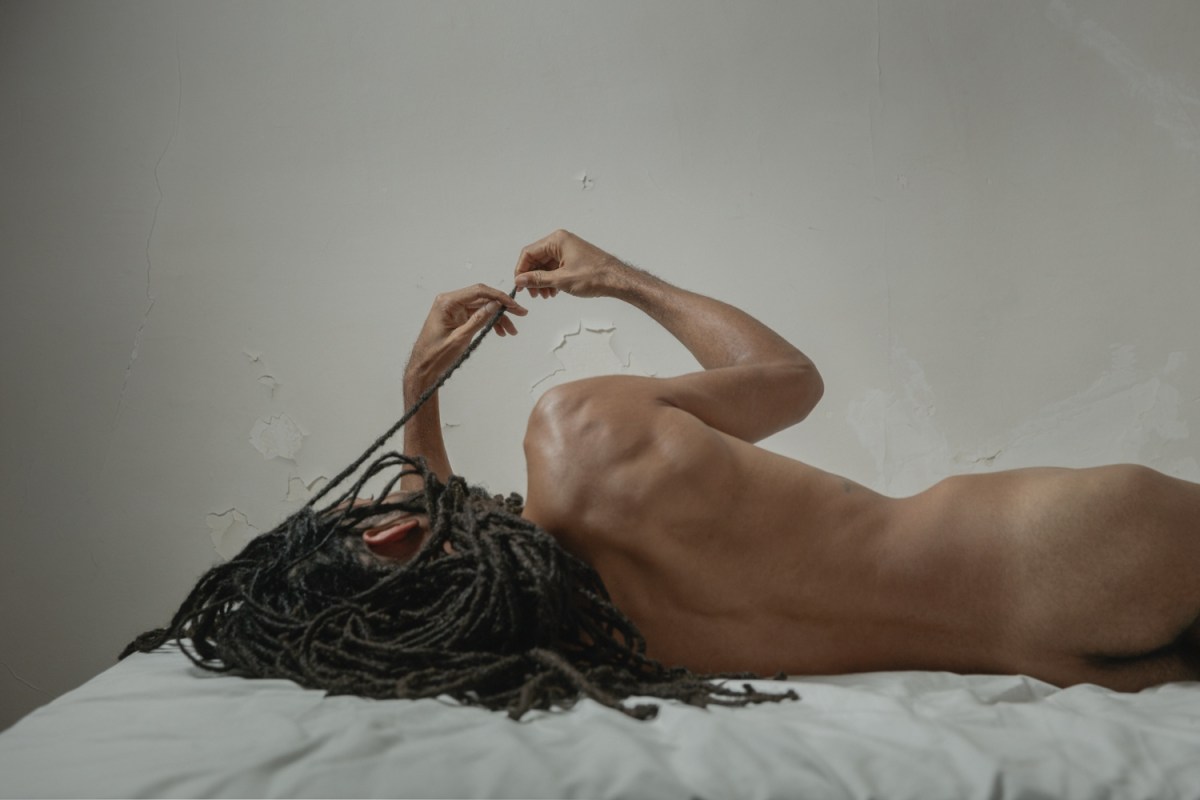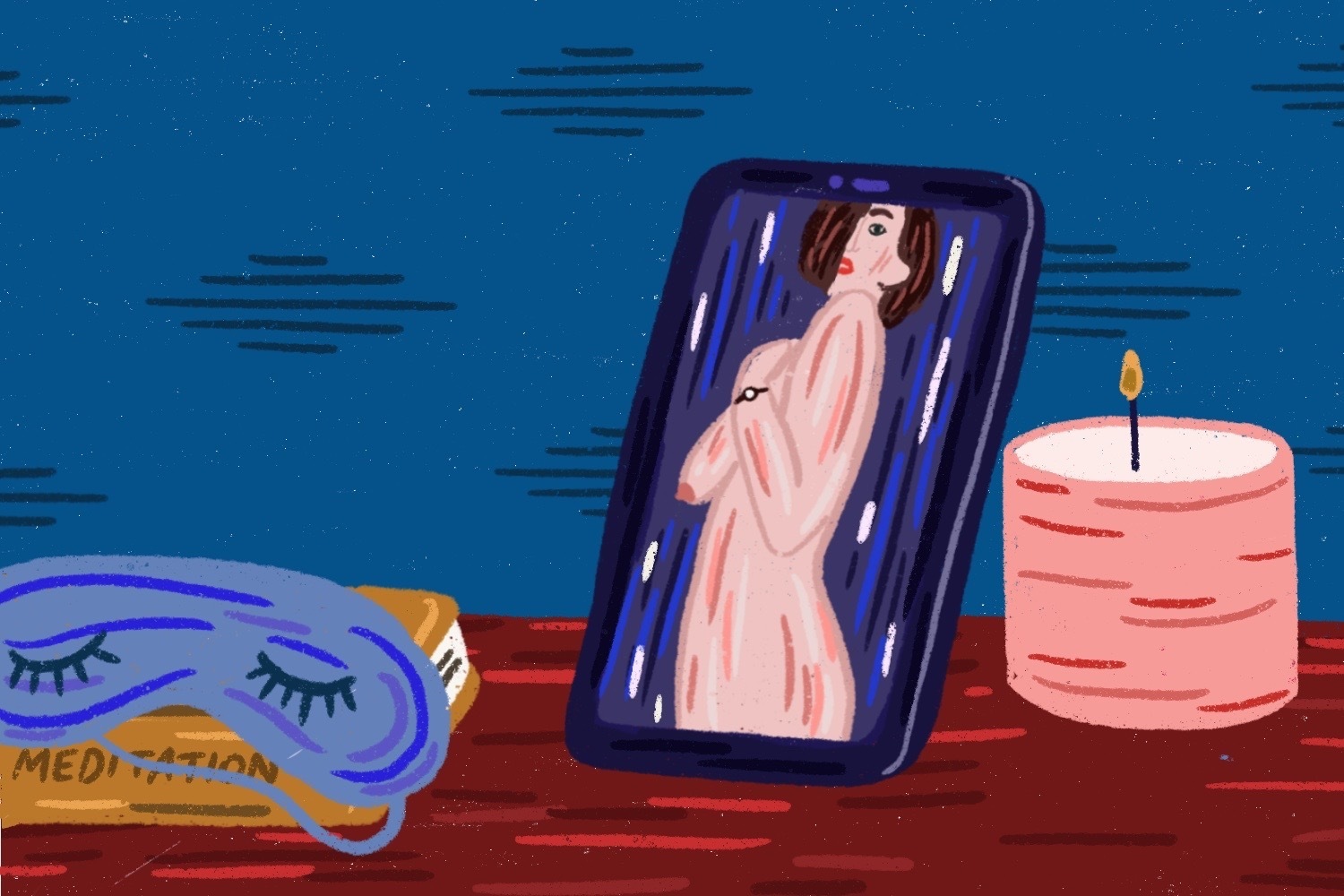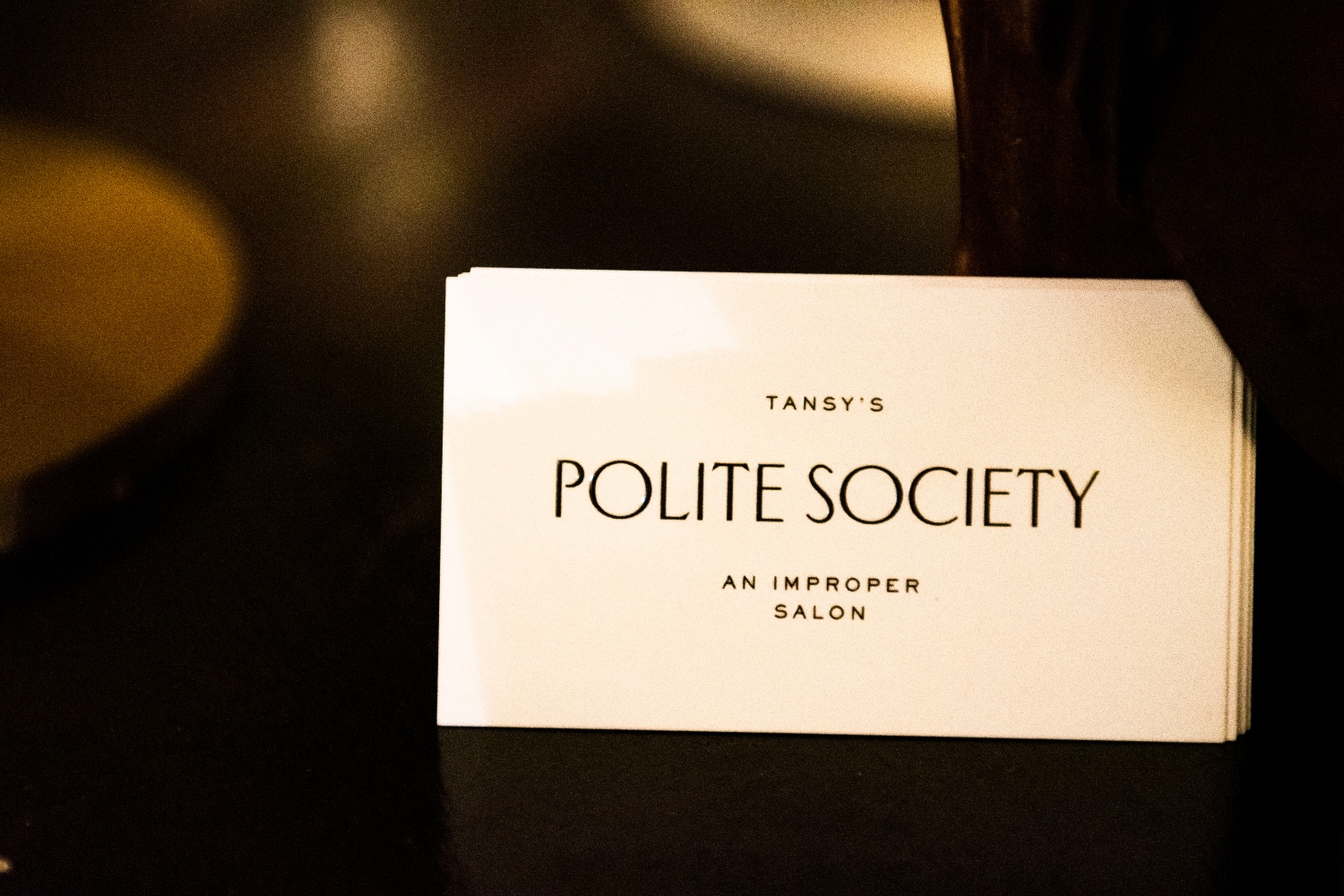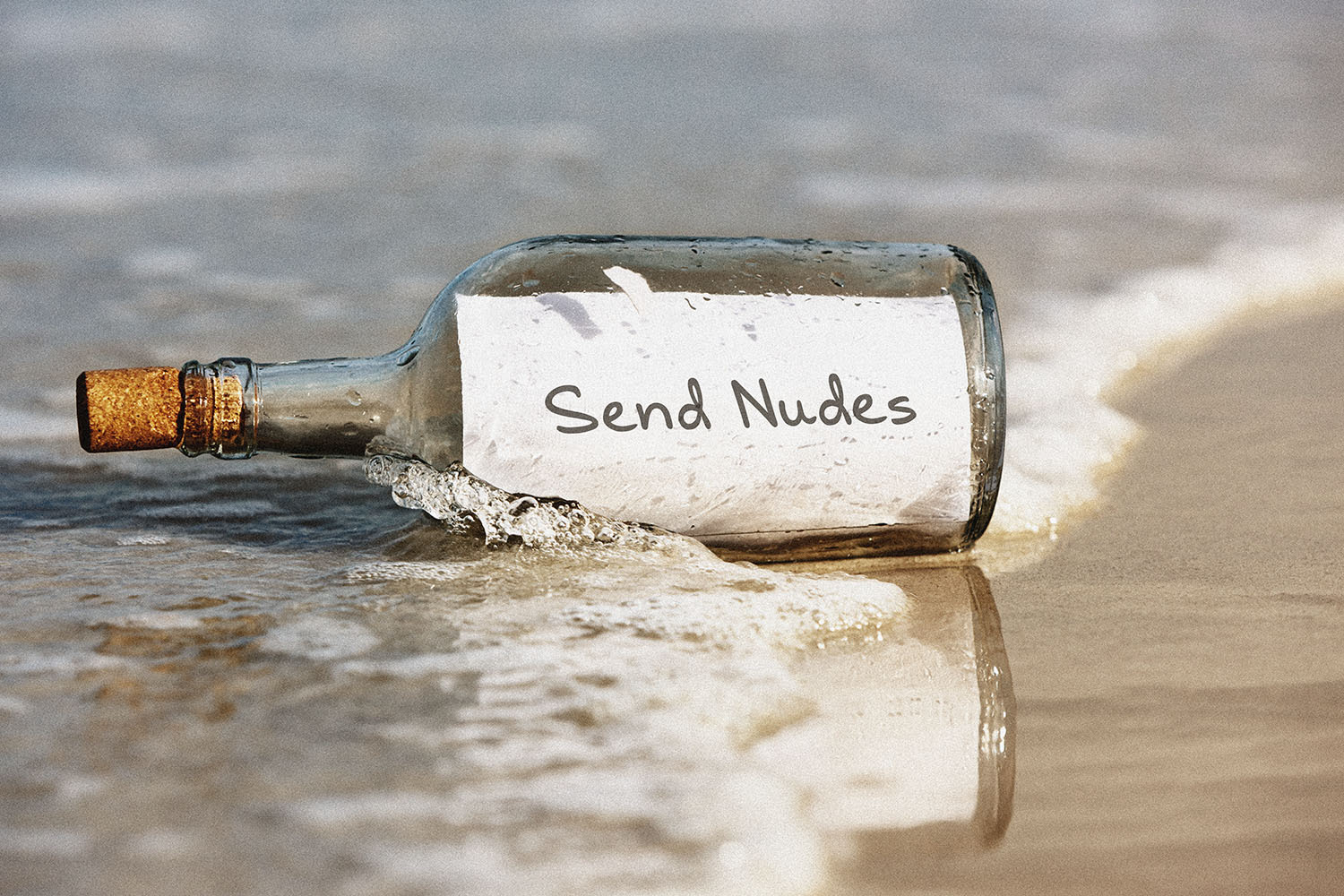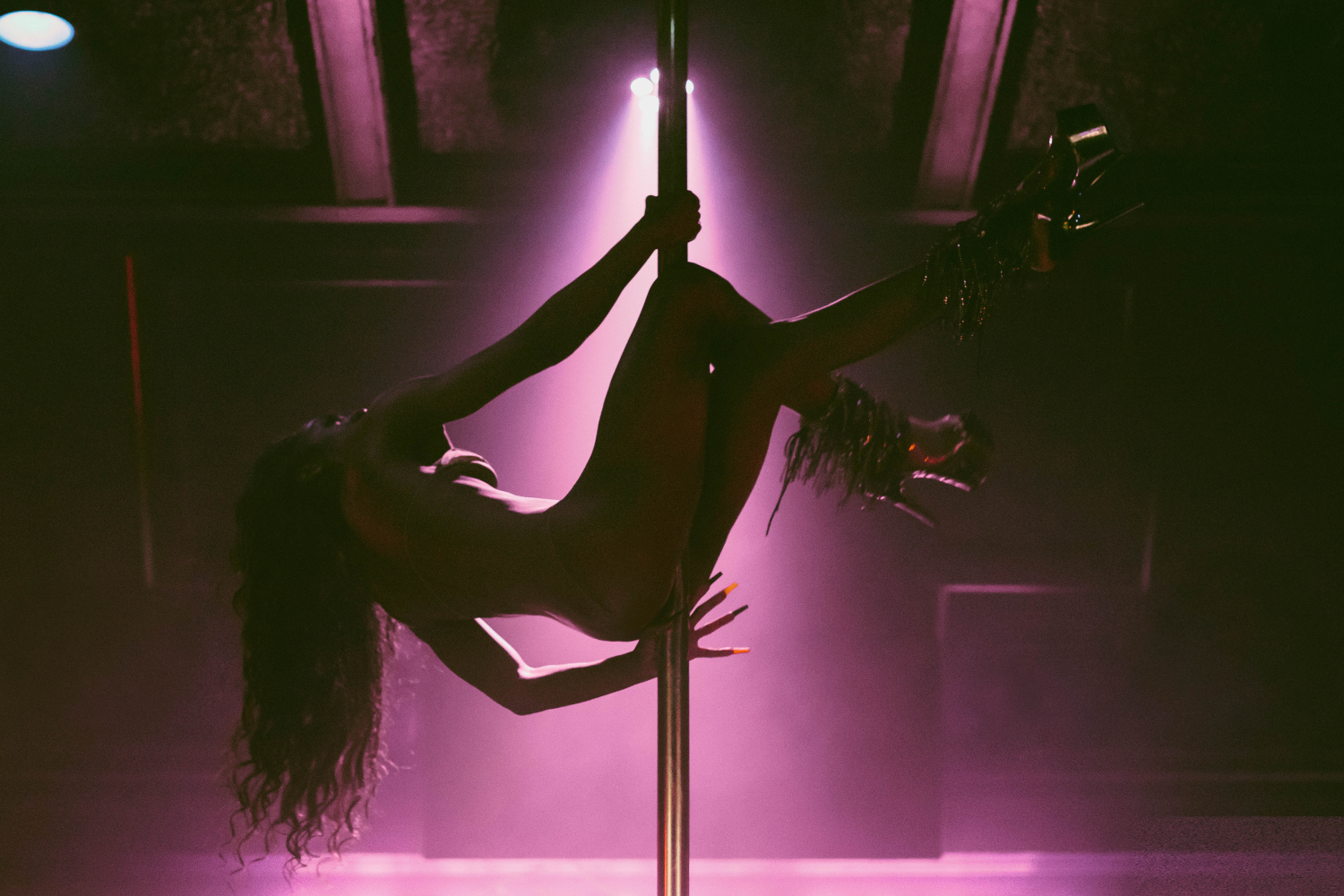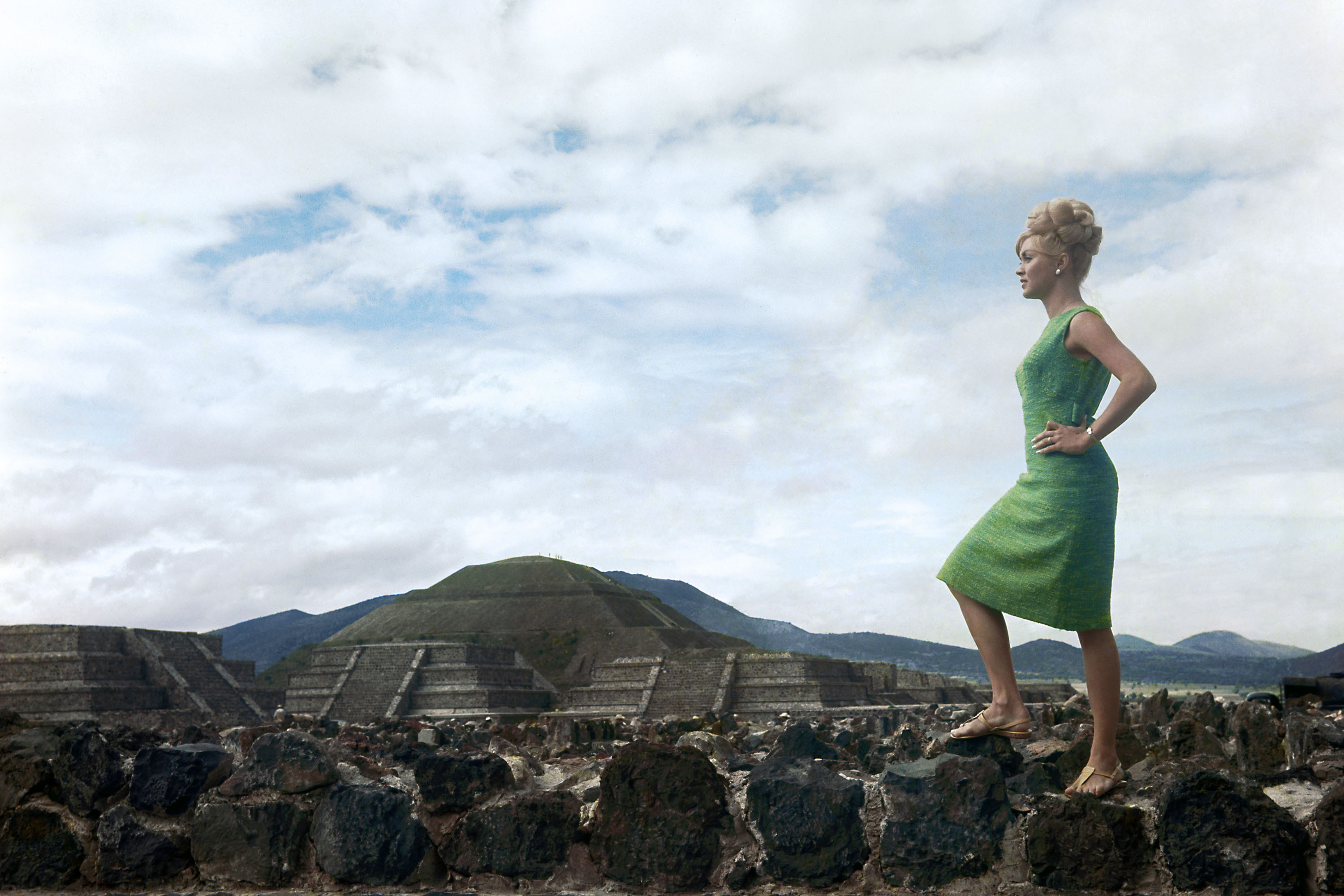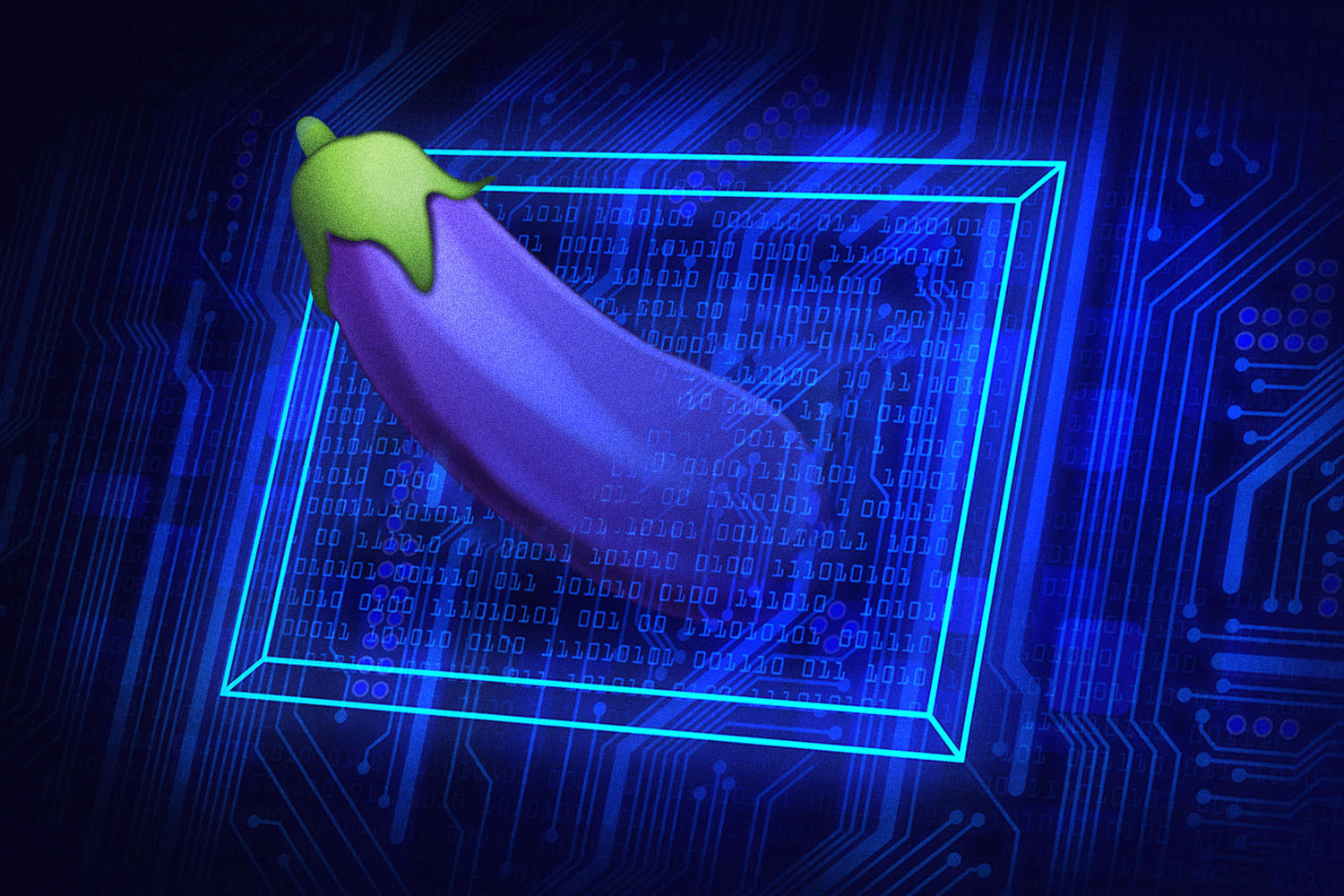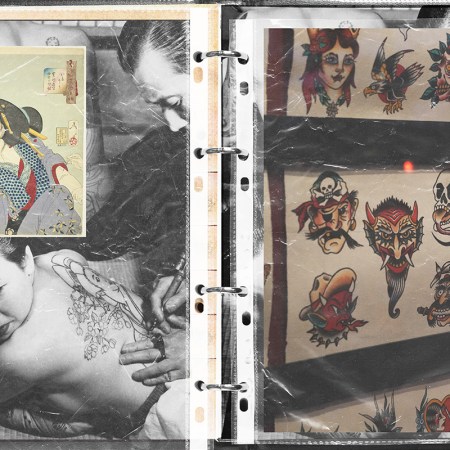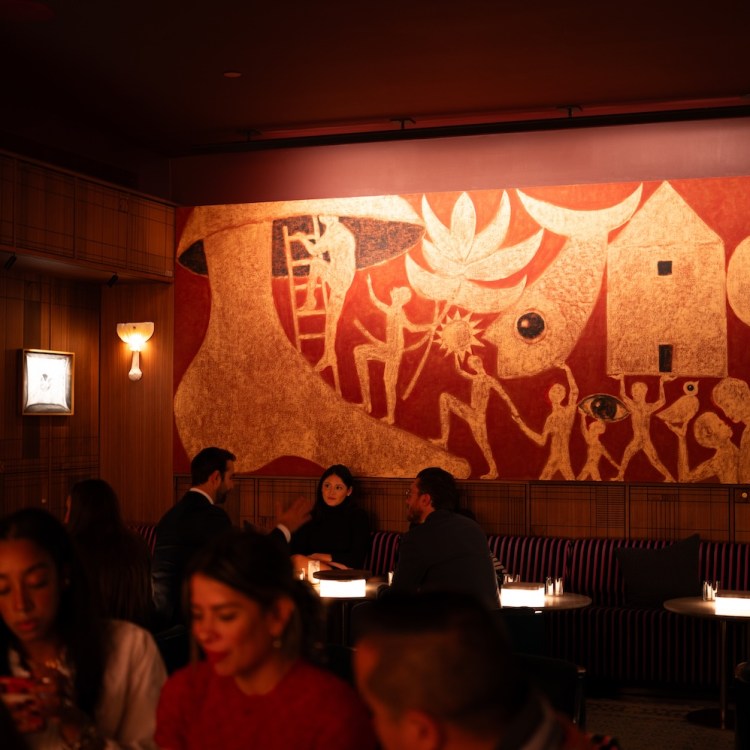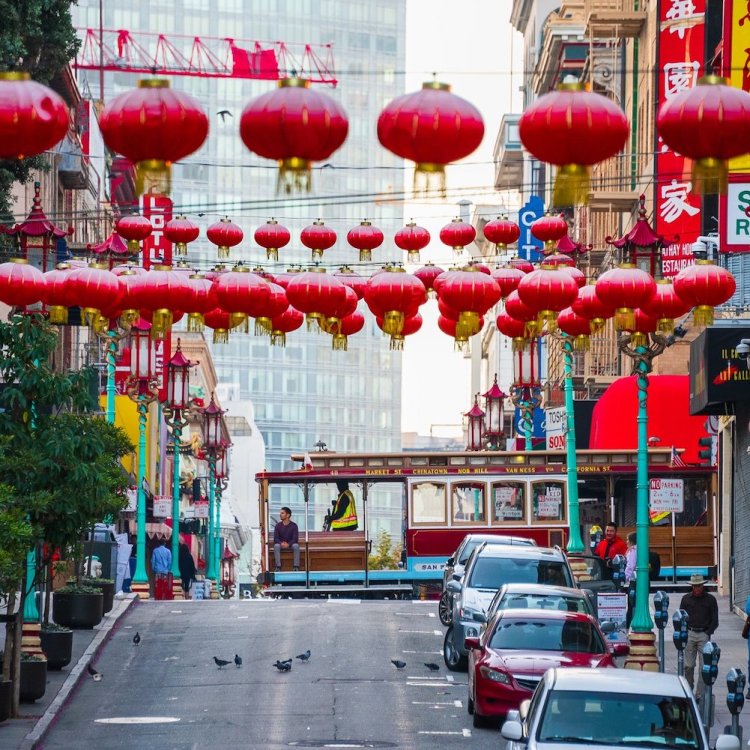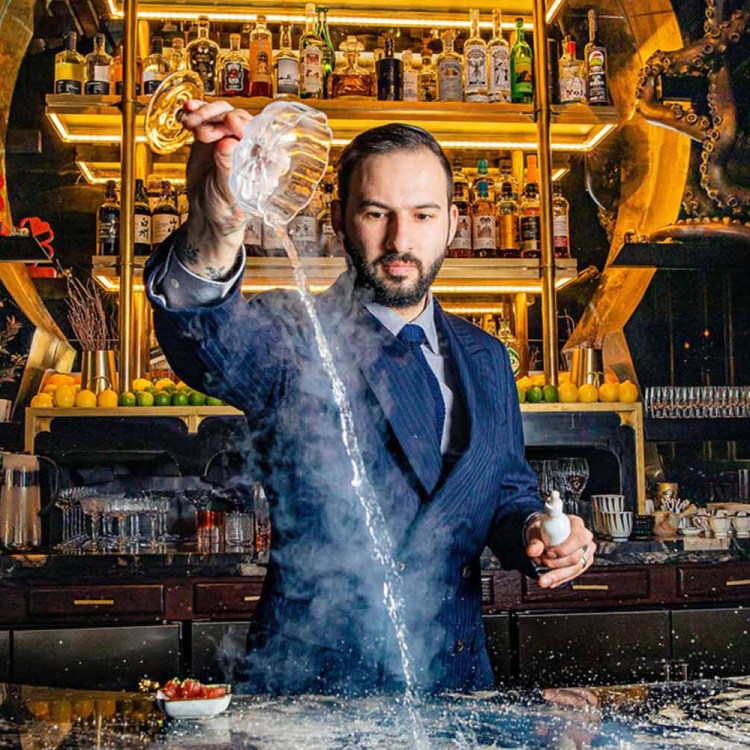On the wall of the ClampArt gallery in New York, Laura Stevens’s portraits reveal beauty in places we don’t typically think to look: on the back of a neck, in the crags of an acne scar, in a patch of hair finely covering a leg, the veins in an ankle. That these visuals appear in a series of male nudes is all the more unusual.
The series, called “Him” and on view until February 26, is a study and even a reclamation of the female gaze. While the latter is a phrase that’s used so often in the context of the art world it can become tedious, it is still mostly used to describe the phenomenon of women looking at women. But Stevens found herself frustrated that said gaze had not yet turned itself to men on a large enough scale. After all, how can you really reclaim a gaze if you don’t turn it back toward the people from whom you were reclaiming it in the first place?
“It got to a point where there was so much around the idea of the female gaze being about re-contextualizing, re-representing women and women’s bodies, and how to represent women by women, of themselves, of other women,” Stevens tells InsideHook, adding that she found it very frustrating that no one seemed to be turning the gaze upon men, that women remained the object. “And I know that’s a really important part of the process that has to be done, but at the same time, for women to take that power of looking and representing men in their own eyes, that was something that I felt was really sorely lacking.”
In “Him,” Stevens centers her gaze on men, something she felt she never really had the opportunity to do before. For her, the project was an exercise in exploring how she could see men and construct her own gaze, picture her own design and own control of looking without being the object herself. “It was important for me, as a photographer, but also just as a woman, as a way of accessing something that I felt like I hadn’t been able to access, not in my life,” she said.
The male nude has long been a prized representation of heroism and sometimes even vulnerability, though it has fallen in and out of fashion throughout the centuries. In the Middle Ages, during peaks of religious fervor, the clothed male figure was more the order of the day, but the Renaissance saw its return as an appreciation for natural forms reemerged and the display of artistic skill became a point of pride. By the Victorian era, male nudes were out again — much too shocking for the Queen. In the industrial era, when many men’s jobs were replaced by machines, the nude male self-portrait contemplated an intimate inner life. In modern day, the male nude is often associated with the male erotic gaze. Throughout all its iterations, however, it has remained relatively rare to see the male nude captured by a female artist.
For centuries, the prospect of women’s education — in general, let alone as artists — was barely possible. If it was, women’s access to male nudes for artistic and anatomical study was extremely limited, if allowed at all. As art schools became more inclusive, this began to change along with social mores, but this meant most women still did not have the same artistic opportunities as men until the beginning of the 20th century. One of the pioneering female photographers of male nudes, Dianora Niccolini, didn’t have a show of her images of male nudes until 1975. The tide gradually turned as the prospect of the male nude photographed by women broadened. Paige Powell’s 1982 nude photographs of former boyfriend Jean-Michel Basquiat come to mind, as do Veronique Vial’s intimate images of male celebrities like Vin Diesel and Jackie Chan, from her 2001 book Men Before 10 a.m, Too!!!. In recent years Abigail Ekue’s “Bare Men” and Molly Matalon’s “When a Man Loves a Woman” have tackled the subject as well. Laura Stevens is among the most recent female artists to approach it.
In Stevens’s images, the male nude is a study of lines and shapes, both intimate and non-erotic — and, by Stevens’s own description, non-gendered. “I didn’t feel drawn to making images of eroticized parts of the body, as has often been the case,” she says. “I was always naturally drawn to making something that was much more sensual and soft. In the end it seemed more about photographing a human body, rather than a gendered body.” Indeed, there is a delicateness and vulnerability to Stevens’s work — a vulnerability that, despite recalling antiquity itself, is today a space her subjects are less often allowed to occupy as men. Stevens’s subjects are decidedly not in control, and that is part of her images’ power.
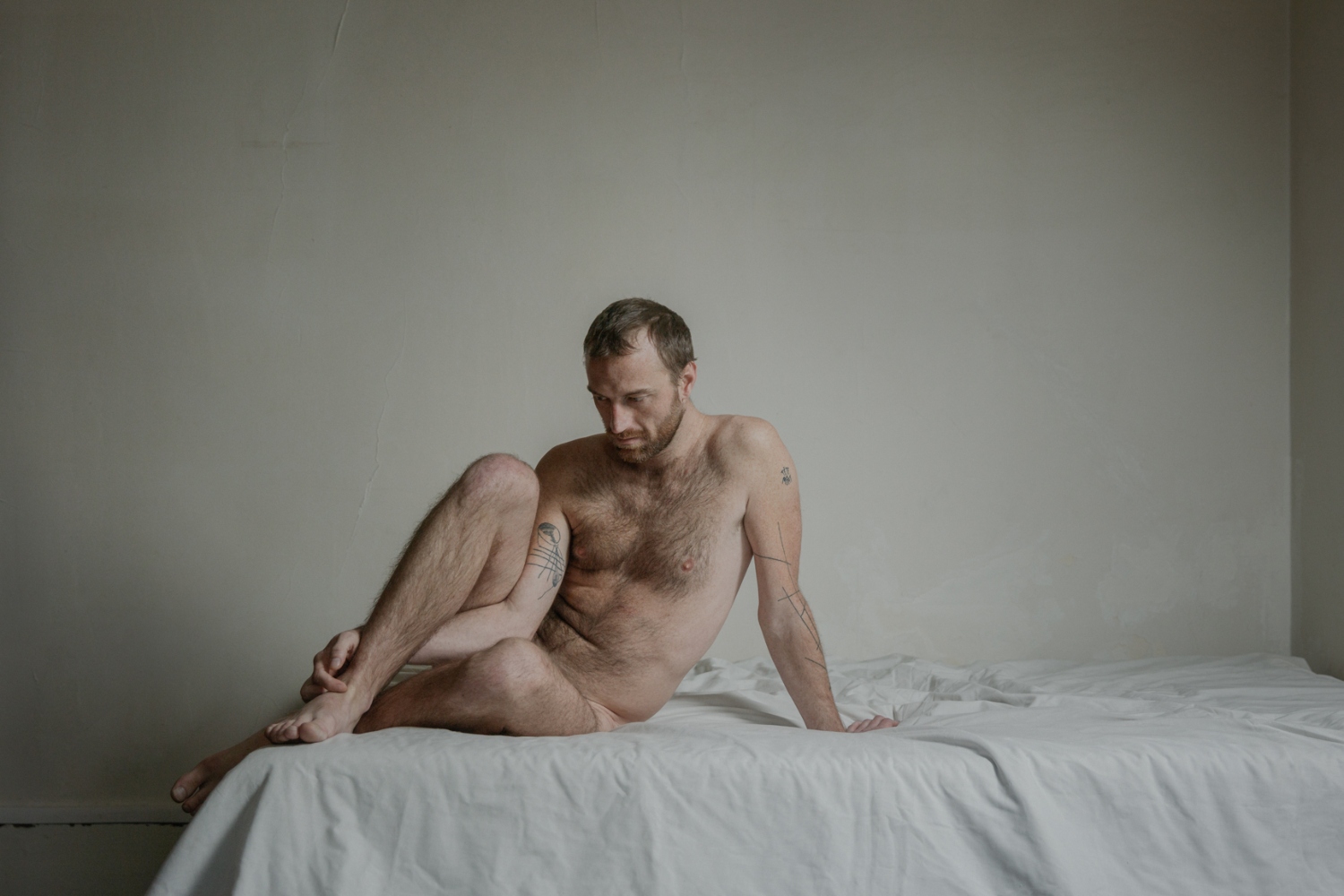
“It’s creating a way for women to shake their own visual language and desires, and for the men to see themselves in ways that they haven’t before,” Stevens says. She found that her subjects had the same vulnerabilities, fears and shames that women had, and that many were curious about being the object in the photograph.
For writer Samuél Lopez-Barrantes, this was indeed the case. Lopez-Barrantes had known Stevens for years and respected her work before posing for her in 2018. He found the shoot undid his preconceived notions of nudity — namely, that it was based primarily on sex — and allowed him to access an understanding of his body he hadn’t had previously. Lopes-Barrantes didn’t feel the artist’s gaze sexualizing him — rather, she caught and responded to things men might never imagine: “It might not be the muscle on you,” he says. “It might be, you know, the hairline on your neck with the light on it in a certain way.” Lopes-Barrantes recalls feeling a new comfort in the vulnerability of posing that he says made him feel sexy, a feat in an age when men don’t really get to talk about feeling that way.
For Peter Gordon, a retired social worker and also a longtime friend of Stevens’, the shoot became an emotional opportunity to face his fears. While Gordon says he’s not so proud of his body, he found himself wondering why he should feel embarrassed, nervous, or anxious to participate, especially if his presence contributed toward a creative pursuit that ultimately worked toward a greater good. “[Laura] has not made any attempt to show the stereotypical, idealistic male body,” he says. “The pictures that she’s taken mostly show men of all sorts of shapes and sizes, and some of the poses do show a certain degree of security, of vulnerability, of sensitivity. And I think that’s an image that needs to be more widely examined.”
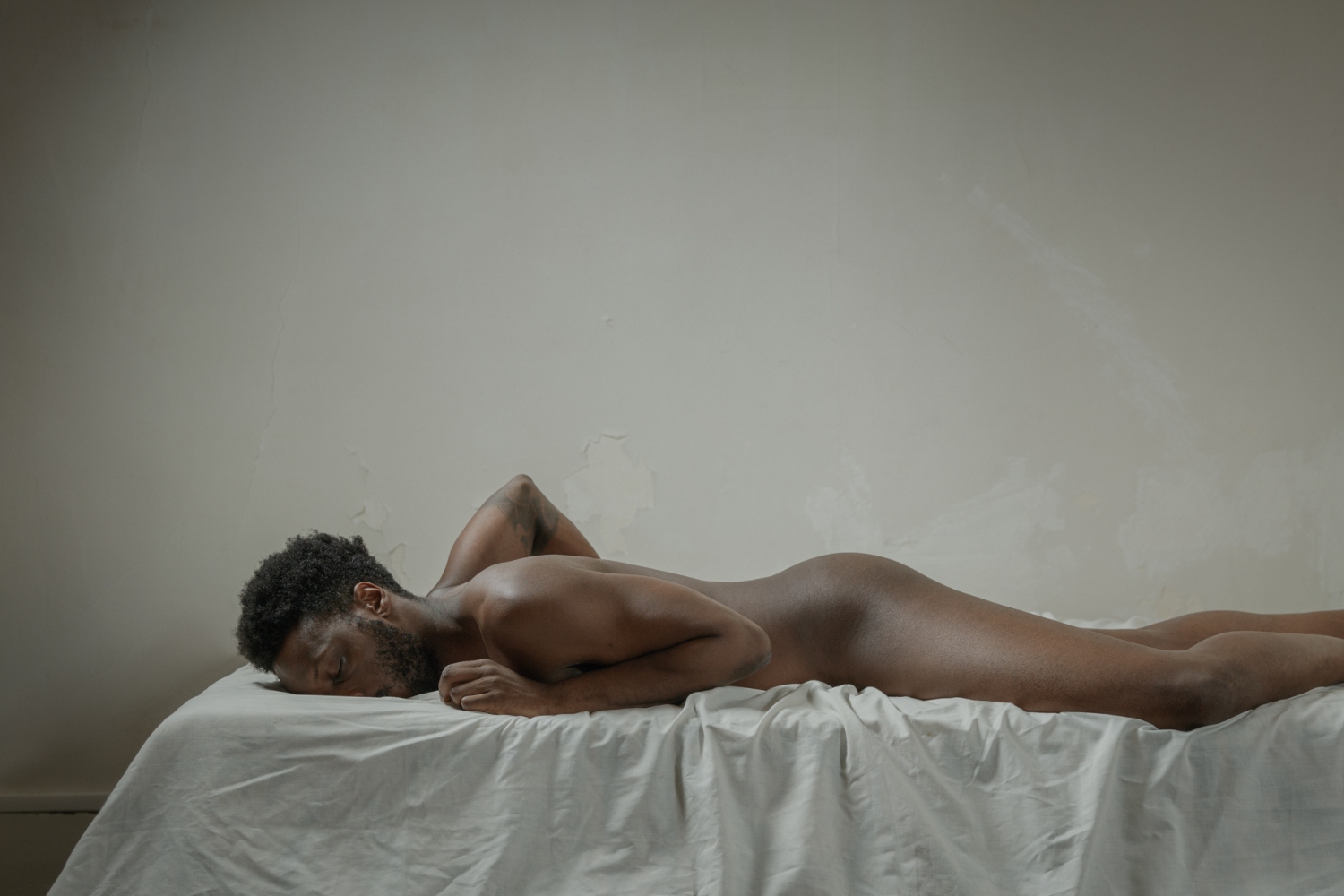
Like Lopez-Barrantes, Gordon found a certain power in that vulnerability, one that changed his life. “It made me think a great deal more about my sexuality and about my life and about my body, and about how I might enjoy my body more openly than I had done up to then,” he said. After his shoot with Laura, Gordon came out as gay.
As much as there is strength for Stevens in reclaiming her gaze, there was also strength for her subjects in their vulnerability. And many of the men she photographed — both models and friends — may have been photographed nude before, but never by a woman.
“It’s so curious, in this day and age that that’s the case, that there is this lack of curiosity or desire to look at, to choose the man as their subject matter,” Stevens says. As the rare female photographer to make that choice, Stevens feels it’s one that “can open up new communications, new desires, new harmonies,” helping men to see “that to be vulnerable is beautiful,” she says. “And for a woman to have that power to look and shape her own desire is powerful.”
This article was featured in the InsideHook NY newsletter. Sign up now for more from all five boroughs.
